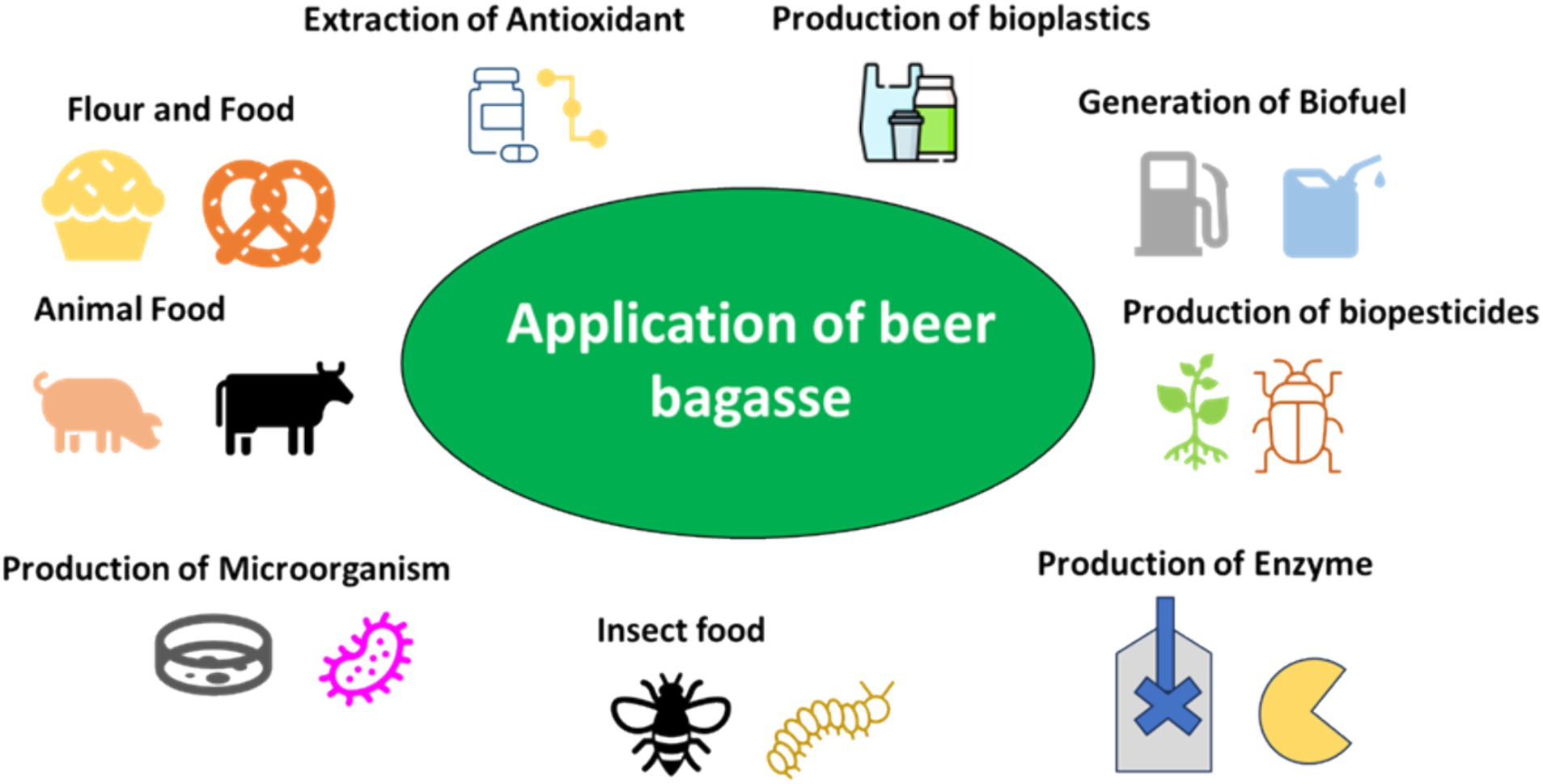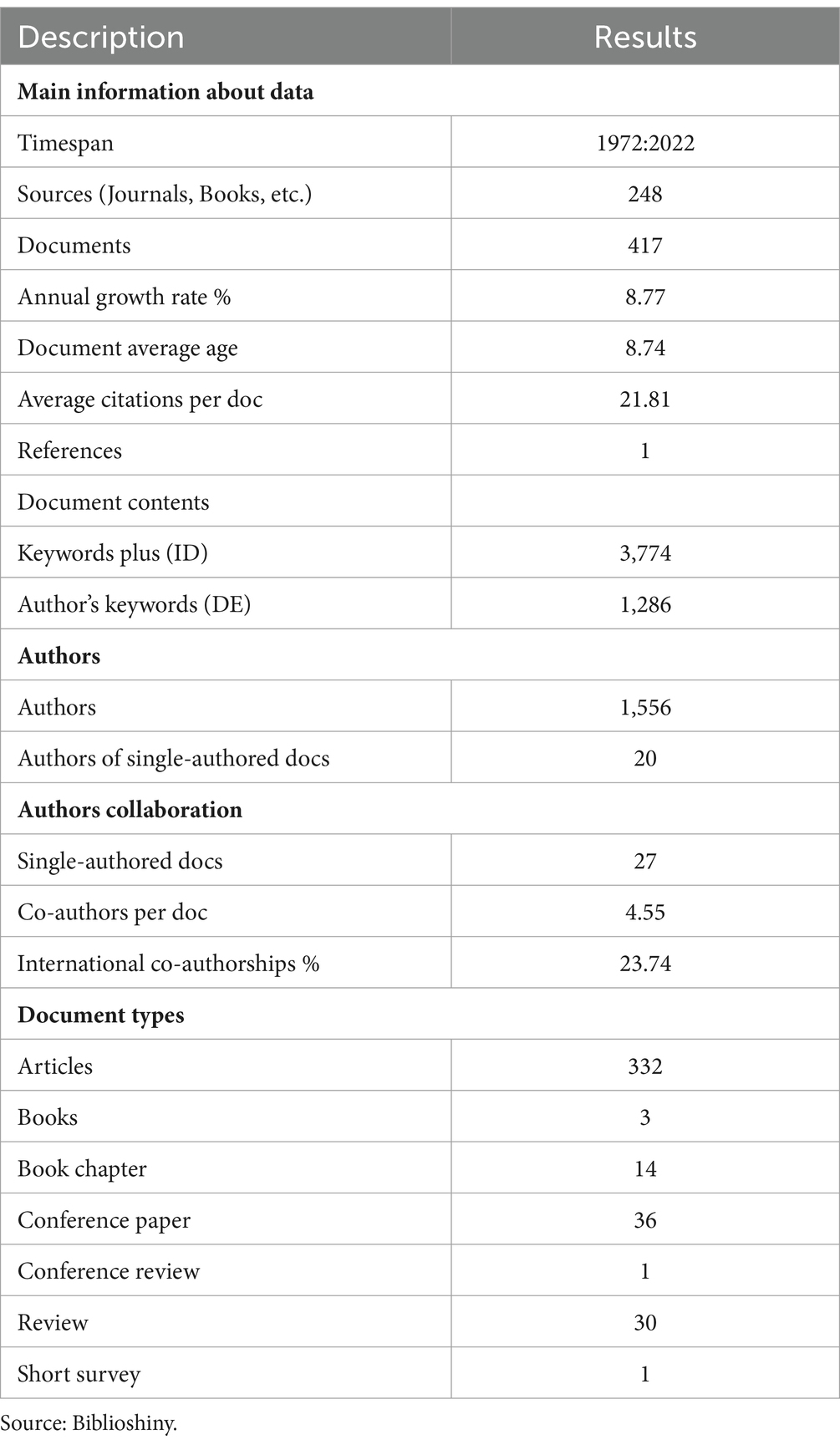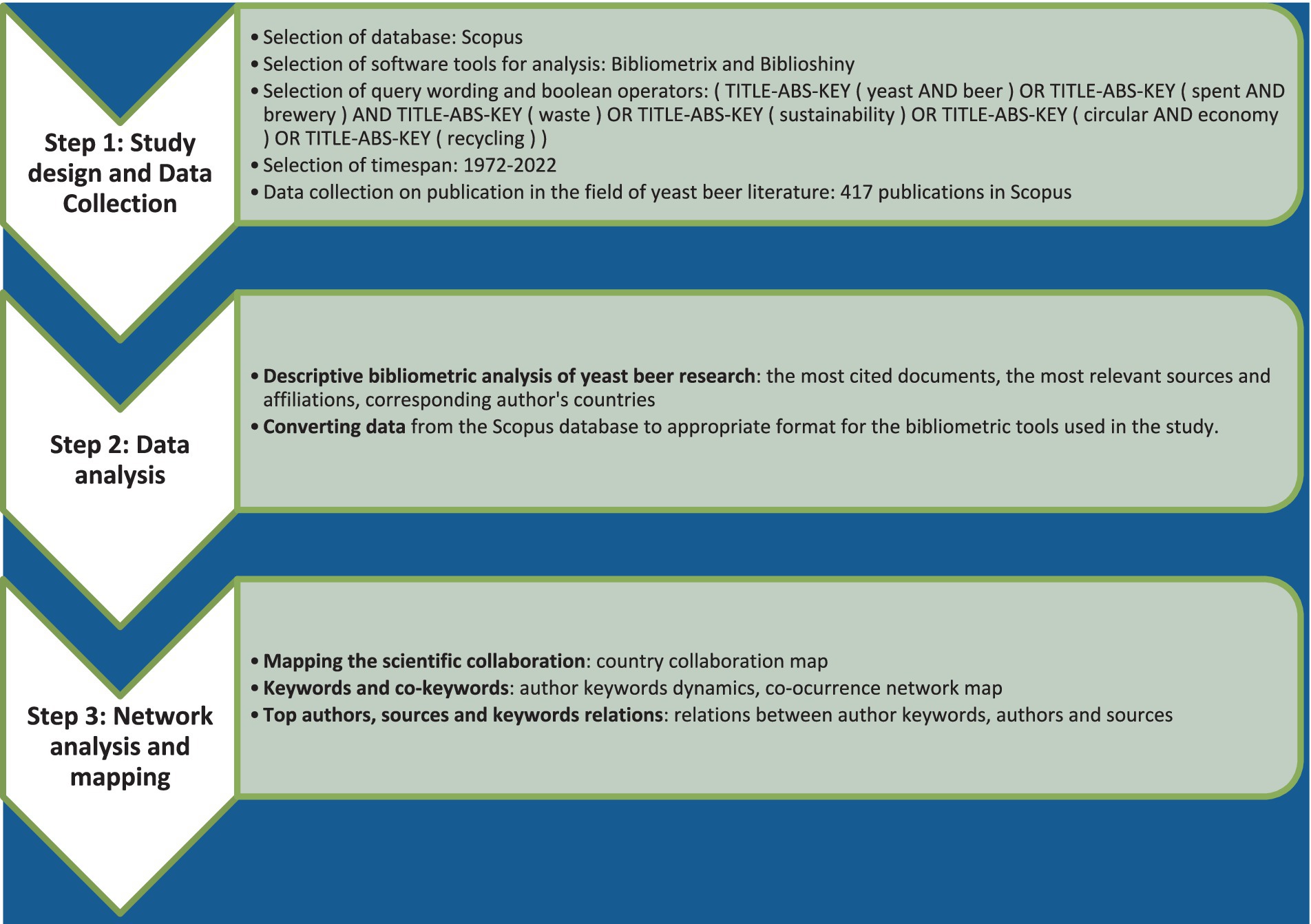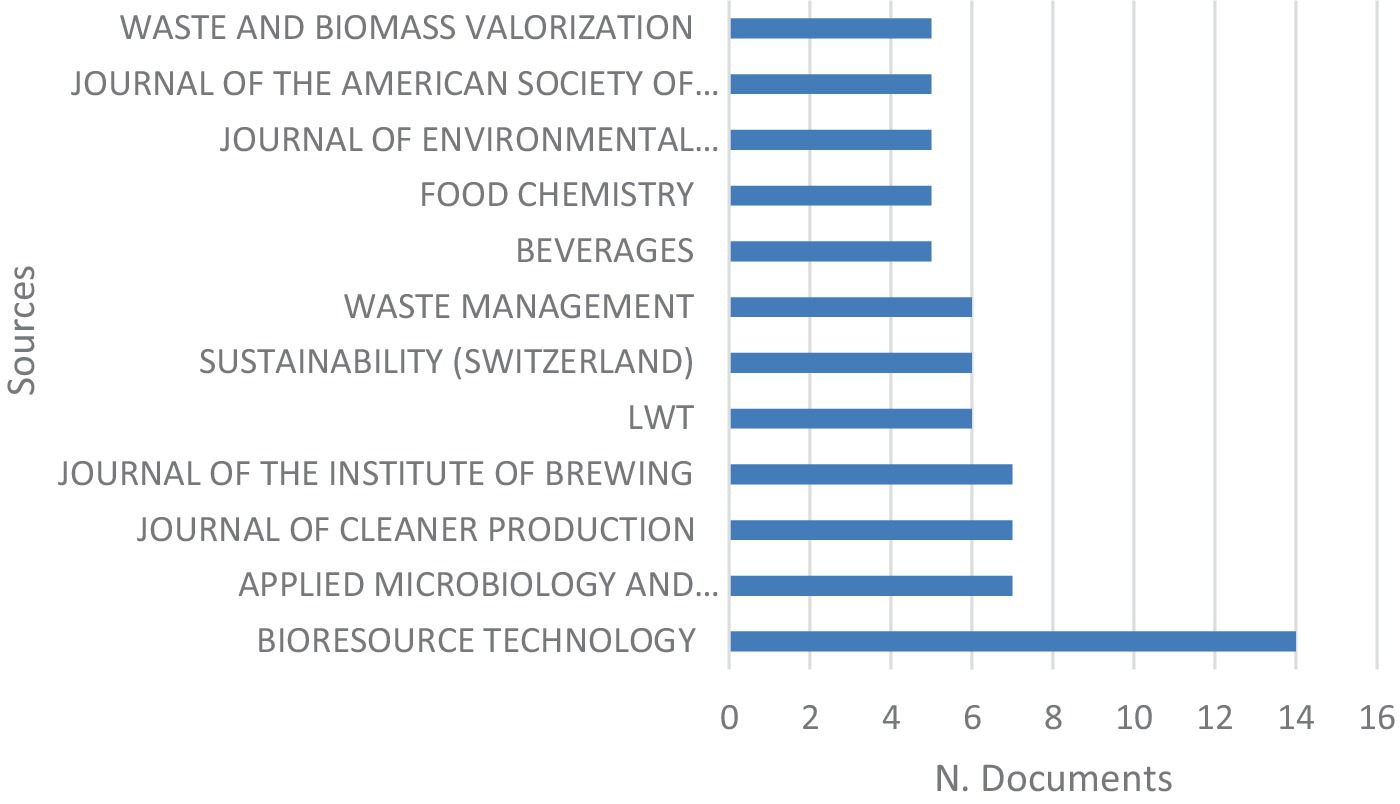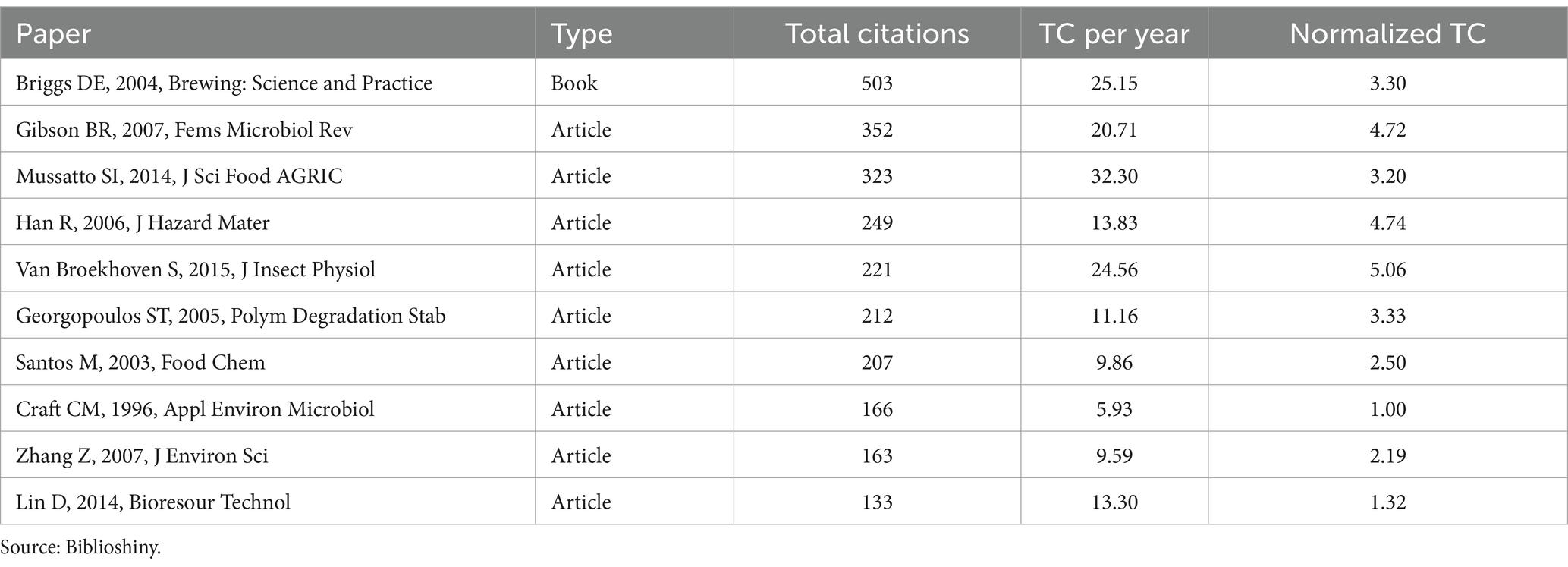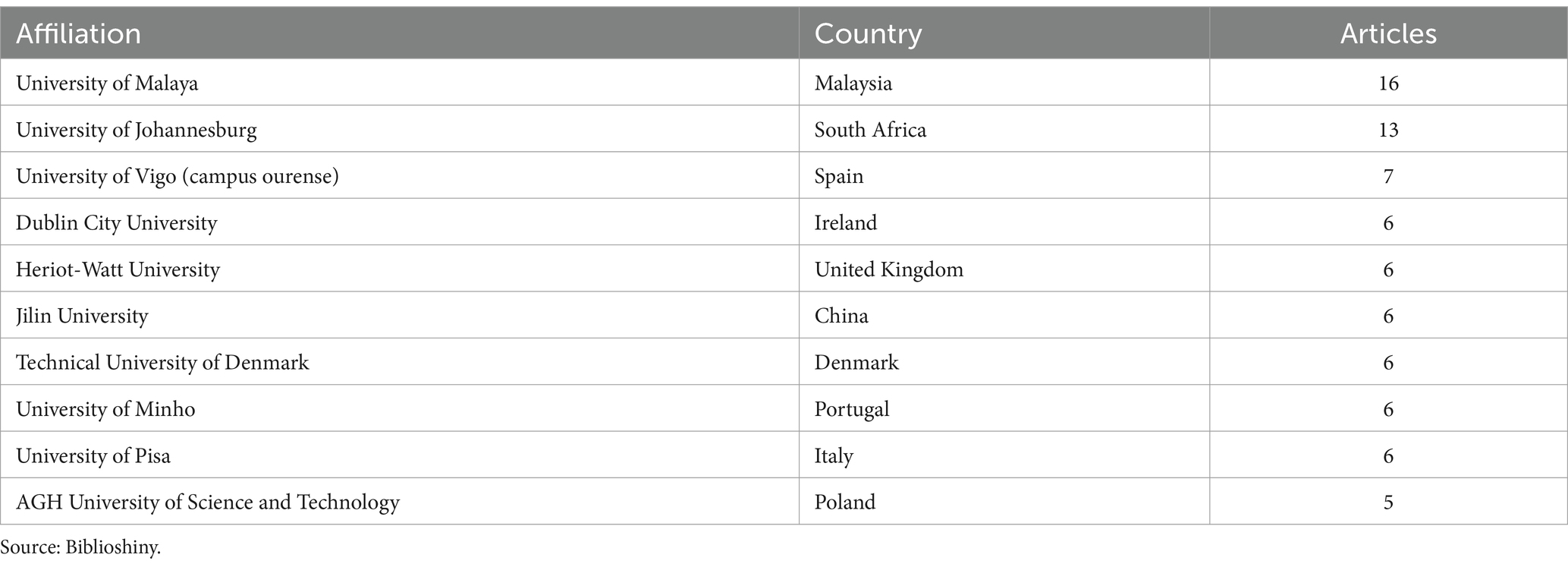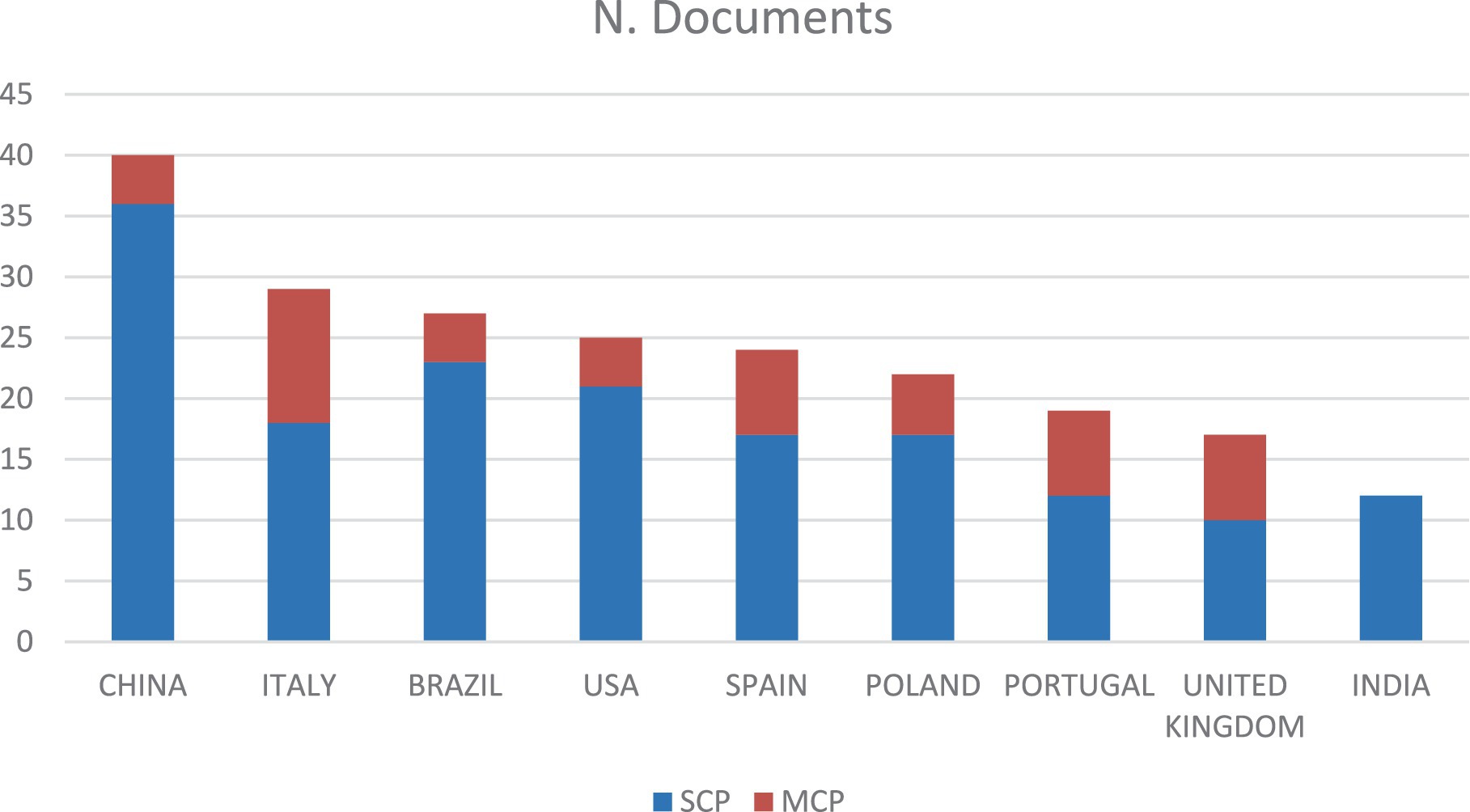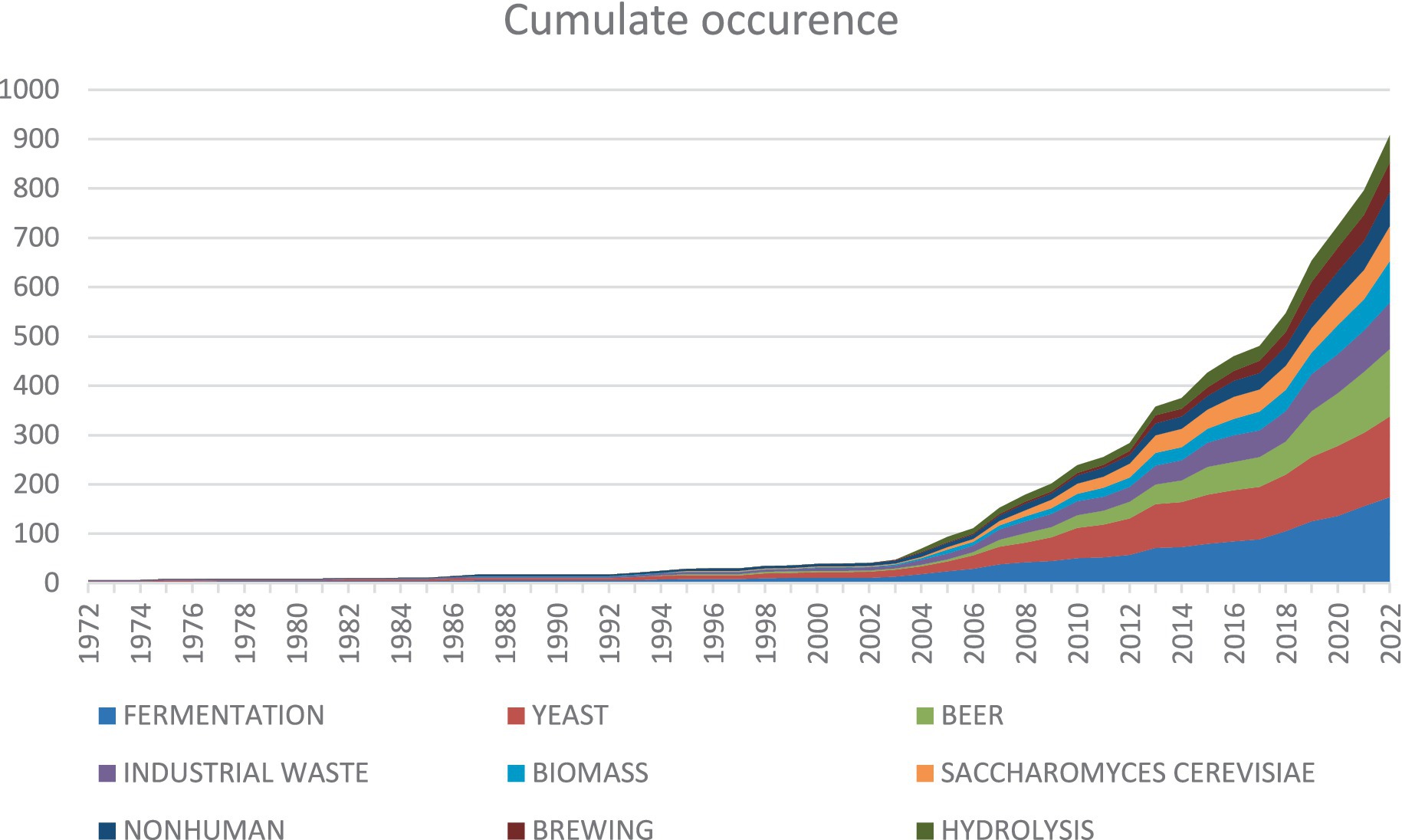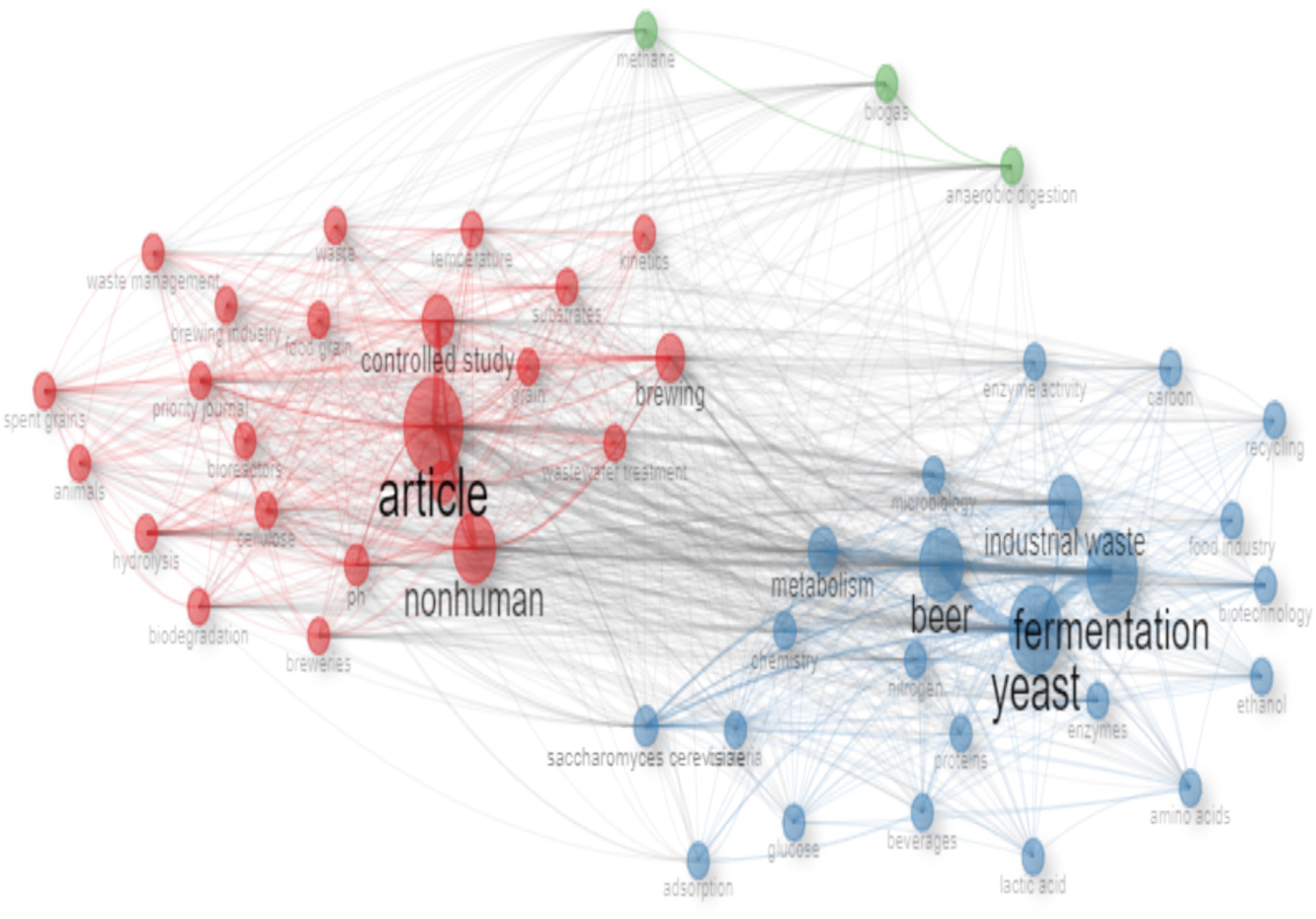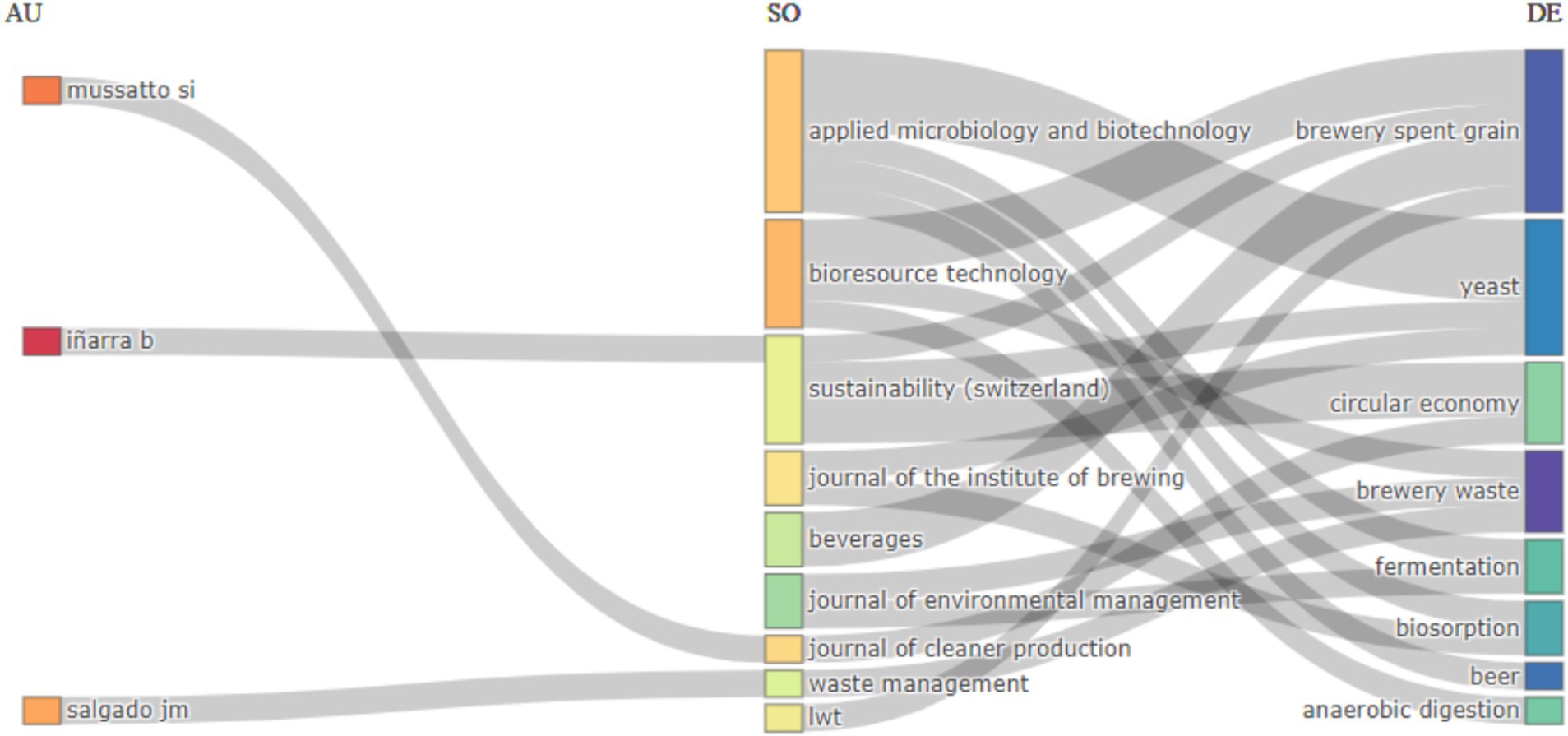- 1Instituto de Ciencia y Tecnología de los Alimentos, Facultad de Ciencias Agrarias y Alimentarias, Universidad Austral de Chile (UACH), Valdivia, Chile
- 2Economic Institute, Universidad Austral de Chile, Valdivia, Chile
- 3Research Team on the Use of Panel Data in Economics, Université Gustave Eiffel, Champs-sur-Marne, France
- 4Center for Economic Research and Sectoral and Social Policies, Economics Programs, Faculty of Business Sciences, Universidad San Ignacio de Loyola, Lima, Peru
It is commonly known that the beer industry, like many other companies in the food sector, has been encouraged to improve their sustainability and waste management requirements. This study intends to fill the gap referring to the Brewery Industry’s impact on academics from 1972 to 2022 related to recycling and waste management issues. The above research utilizes bibliometric analysis via Biblioshiny and the Scopus publications database, as well as an online interface for Bibliometrix analysis. For studying the Global Brewery Industry literature, this method offers a viable alternative to traditional bibliometric analysis. Among the findings we can mention are that most Brewery Industry inquiries were distributed by the “Bioresource Technology” and the most globally cited document is the book titled “Brewing: Science and Practice” written by De Briggs in 2004. European countries such as Italy, Spain and Portugal hold a strong academic collaboration with the Americas (mainly Canada, United States and Brazil). Another interesting finding indicates that the circular economy and recycling are not very present topics in the scientific literature, maybe because sustainability is a subject of recent discussion and study in the brewing industry.
1 Introduction
The growth in population and the effects of climate change have increased the requirement for energy, food and fuel. The depletion of fossil resources is threatening the oil-dependent global economy. In contrast to the conventional linear economy, the circular economy attempts to increase the eco-effectiveness of products. In this model, the reuse and recycling of by-products would minimize waste production and stimulate their derivation into high-value products and create additional business profits (Pasquet et al., 2024). An alternative to solve some of these current problems is waste recovery, an activity where agricultural and industrial waste is used to convert it into new products with greater commercial value. This alternative is 100% renewable by taking advantage of residual biomass as raw material and simultaneously reducing waste production and waste handling costs (Koul et al., 2022).
Lignocellulose, the major component of plants’ cell walls, represents more than 70% of the available renewable resources in the biosphere (Masran et al., 2016; Shirkavand et al., 2016). Currently, great attention is being paid to the biotechnological potential of biomass as a raw material for the production of high value-added products such as enzymes, organic acids, amino acids, also to serve as a sustainable source of biofuel (biodiesel, bioethanol, biogas, biohydrogen), etc. (Suryadi et al., 2022). In this context, biomass resulting from the processing of agri-food industry is one of the most abundant renewable biological resources on Earth (Michelin et al., 2015). Considerable research efforts are being expended in learning how to fully exploit the commonly discarded plant biomass to generate clean energy and chemical products that add value to these raw materials (Seow et al., 2022).
The wastes produced by food industries, including brewing, pose both economic and environmental concerns. The beer brewing process consists of several steps (Figure 1). Beer is one of the oldest beverages produced/consumed by man and the brewing process begins with the wort production. The milled barley malt is mixed with water in a mash tun to convert the malt starch to sugars (Yin Tan et al., 2023). At the end of the process, two streams are obtained in the lauter tun: the insoluble non-degraded part of the barley malt grain or beer bagasse and the wort. Then, the wort is transferred to the tank where it is boiled with the hops. In the whirlpool any malt or hop particles are removed and after that, the wort is cooled down and fermented in the fermentation tank. Yeast converts the sugars’ wort into alcohol and carbon dioxide producing the beer (Kozłowski et al., 2021).
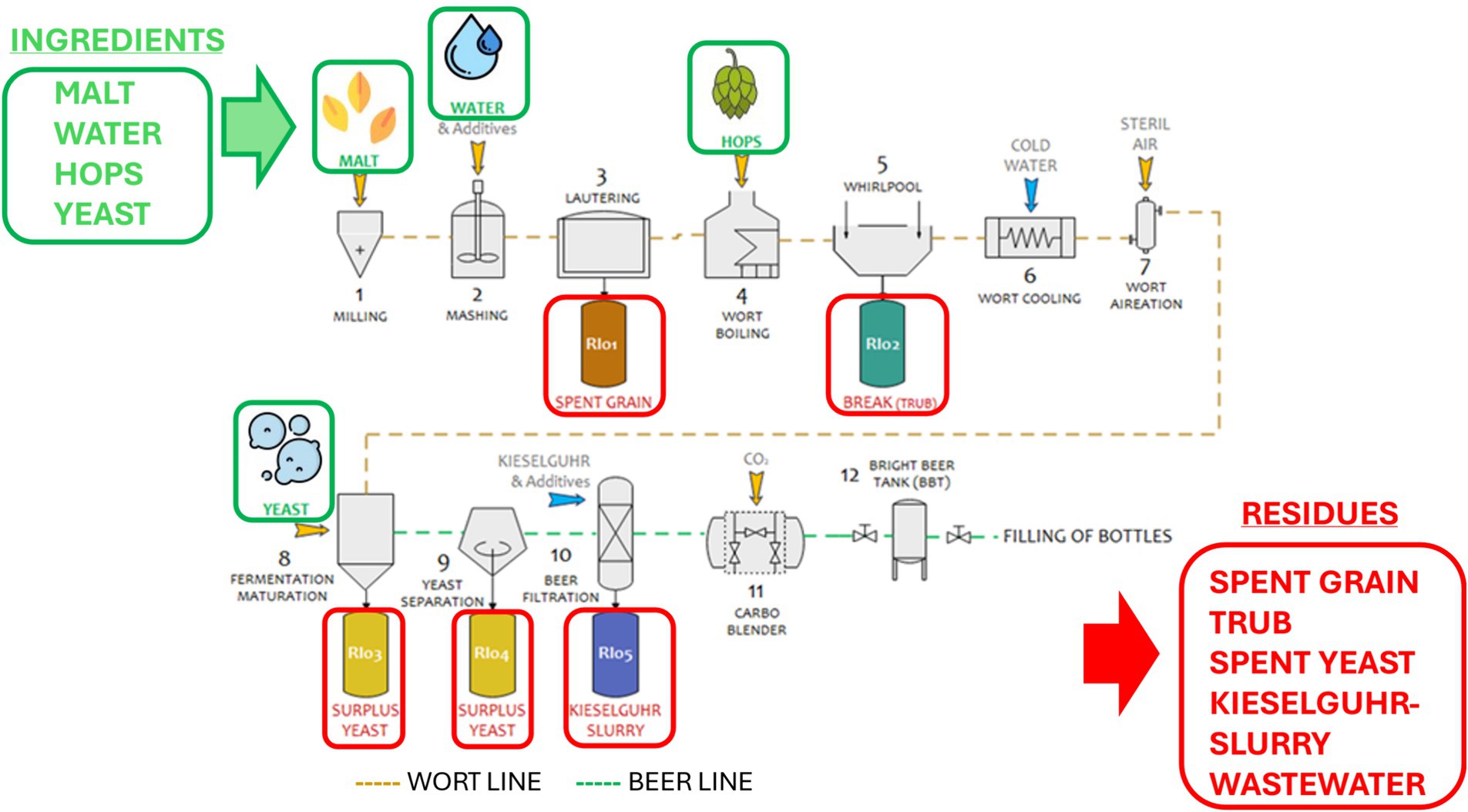
Figure 1. Schematic beer brewing process. Source: Figure based on diagram from Raimilla et al. (2023).
In a brewing process the main wastes that are produced are: beer bagasse (spent brewery grain enclosed in red square in Figure 1—Rl01), yeast (spent yeast enclosed in red square in Figure 1—Rl03 and Rl04) and CO2. Also, in this process are produced trub, kieselguhr slurry and wastewater. The most important one is the beer bagasse, a lignocellulosic material, that can make around 85% of the total waste of a brewery (Ortiz et al., 2019). Beer bagasse is mainly used as animal fodder, which is a positive alternative to incineration or disposal. For off-site disposal of solid wastes many breweries are working with local farmers to reuse the brewers spent grain for feeding bovine cattle (European Commission, 2017). However, this approach does not reflect technological possibilities identified by research and the true potential of waste valorization. The brewing sector generates a large quantity of residual by-products which can be sustainably reused within the industry to contribute to cover the energy requirement of the process and at the same time to contribute to minimize the amount of waste (Cerqueira e Silva et al., 2022).
A previous study using bibliometrics tools has analyzed the opportunities of the circular economy and biorefinery in the transition towards a sustainable beer industry (Sganzerla et al., 2021). Other papers have analyzed the worldwide evolution of the craft beer industry (Durán-Sánchez et al., 2022) and Oyedeji and Wu (2023) investigating attempts to limit the population and environmental implications of food byproducts. This paper considers the essential bibliometric examination of the Global Brewery Industry focusing on recycling and the circular economy utilizing Biblioshiny, a web interface for bibliometrix examination situated in R programming (Gagolewski, 2011; Mougenot and Doussoulin, 2022, 2024). Section 3.2 will address some of the critiques and justifications for using the bibliometric method.
This research aims to analyze the evolutions of the Global Brewery Industry on academics from 1972 to 2022.
The article is organized as follows: Section 2 describes a bibliometric examination of peer-reviewed literature on the subject. Section 3 covers major organizations, countries, and scientific collaborations; one of the main findings is that the Global Brewery issue has been explored from a wide range of scientific disciplines. Section 4 closes by identifying limitations and suggesting future study directions.
2 Background
2.1 Production of beer in the world
The world production of beer varies year by year and the trend in worldwide beer production from 1998 to 2022 is shown in Figure 2. A clear decrease is observed in beer production in 2020 and 2021. Subsequently in 2022, beer production increased as global restrictions imposed due to the COVID-19 pandemic were gradually removed. In 2022, global beer production amounted to about 1.89 billion hectoliters, up from 1.3 billion hectoliters in 1998 (Conway, 2022).
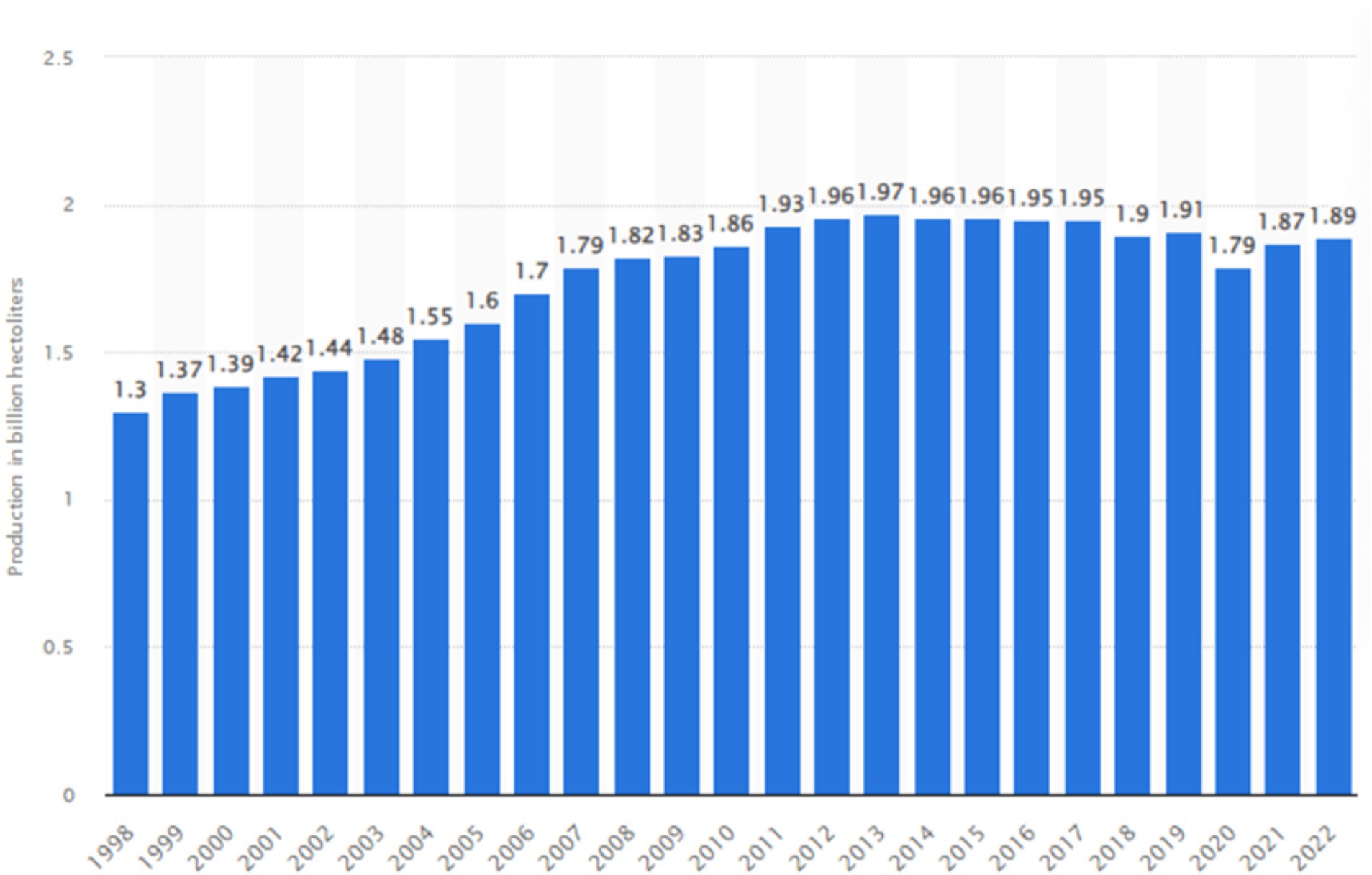
Figure 2. Beer production worldwide between 1998 and 2022, in billion hectoliters. Source: Figure based on data from Conway (2022).
The production of 1 hL (hL) of beer leads to the simultaneous generation of 20 kg of beer bagasse (Lins et al., 2023). Based on the global beer production quantities in 2020, about 36.4 million tons of beer bagasse would be available worldwide (Zeko-Pivač et al., 2022).
2.2 The circular economy and sustainability in the brewing industry
The circular economy is a new perspective which allows wastes to be seen as resources, useful for other processes, within or without the industry that produces them. It is crucial to note that the sustainability goals depend on the brewery’s size. Craft beer of small and medium-sized should prioritize the following sustainability priorities and actions, according to Ness (2018): Craft brewers should utilize a variety of cutting-edge strategies to encourage sustainability in areas including energy and the environment, water efficiency and conservation, the recycling of wasted grains, and community involvement in all its forms.
According to Liu et al. (2015), the global sustainability challenges aim to preserve biodiversity by supplying clean air, water and intensive water and energy. This has a direct bearing on the brewing of beer, as water is a fundamental and highly significant ingredient in the process (Hoalst-Pullen et al., 2014). As Withers (2017) points out, integrating holistic systems or techniques that combine a multidimensionality of issues and interdisciplinary scholarship like those considered in the UN Sustainable Development Goals (SDGs) is necessary in the management of food and beverage waste (Miller, 2024).
The rise of craft breweries and their apparent focus on environmental, economic, and/or social sustainability trends, as noted by some authors like (Hoalst-Pullen et al., 2014; Jones, 2018), have contributed significantly to the industry’s increased sustainability. This has resulted in a local and global “greening” of the brewing sector, which will be examined in the results’ analysis of the global expansion of the literature on recycling in the brewing sector.
Olajire (2020) agreed with Hoalst-Pullen et al. (2014) that one of the biggest industrial water consumers over the past 20 years has been the brewing sector. As a result, there is a problem with the amount of energy and water used, as well as the production of solid waste and its byproducts. In contrast to Hoalst-Pullen et al. (2014), Olajire (2020) adds that greenhouse gas emissions are a problem that is highly relevant to the conversation about climate change and that it will likely pose challenges to the sustainability of the global brewing sector in the future, towards a “zero emission brewery” (Robbins and Boillat, 2002).
In accordance with Ho et al. (2024), the brewing sector has to use life cycle assessment (LCA) to make tangible progress toward sustainability and the circular economy. This practice is linked to emissions load evaluations and the development of criteria for a circular economy model.
More than these criticisms, the results that we will select will serve as bridges between the various geographical areas where the articles are published, as well as the key authors, enriching the discussion by recognizing the factors that may influence the interpretation of trends and collaborations in research on recycling and circular economy in the brewing industry.
We notice that, according to Corvellec et al. (2022), there is an ideological agenda dominated by technical and economic considerations when discussing recycling and the circular economy in general. In addition, Doussoulin (2020) notes that recycling and the circular economy are frequently seen as the only viable solutions to the waste crisis, but this overlooks the fact that, as Haas et al. (2015) pointed out, recycling also contributes to the maintenance of an economic system with low circularity.
2.3 Valorization and application of beer bagasse
The brewery industry is following a perspective for increasing energy efficiency and reducing wastes (solid wastes and wastewater) and CO2 emissions. Both on-site and off-site solutions are nowadays being applied (European Commission, 2017). Because beer bagasse is the main waste of the brewing industry, we will focus on bioprocesses for its recovery and reuse.
For on-site solid waste treatment two options are available: composting and a waste-to-energy approach, including anaerobic digestion and thermochemical conversion processes (incineration, pyrolysis, gasification). The most common waste-to-energy system used in the brewery industry is anaerobic digestion. This anaerobic biological process converts organic matter into biogas (50–70% CH4, 30–50% CO2) and trace amounts of other gases (Shirkavand et al., 2016; Aboudi et al., 2021). Sganzerla et al. (2022) optimized dry beer bagasse in anaerobic digestion to produce methane and obtained a yield of 10.53 LCH4·kgtotal volatile solids−1. According to the latter results, purified methane could generate electric and thermal energies in industrial heat and power units, which covers 7.38 and 6.86% of the electricity and heat required for beer production, respectively. Thus, breweries may reduce their energy consumption and mitigate greenhouse gas through the anaerobic digestion of by-products.
Beer bagasse can be used as a functional ingredient in the food and pharmaceutical industry, providing fiber and protein to products (Zduńska et al., 2018). It can also serve as a substrate for the production of enzymes (Moran-Aguilar et al., 2021) and compounds in the food industry (Mahari et al., 2020), or as food for insects, which in turn generate compounds for other products (Chia et al., 2018). Another use for bagasse is as a potential source of protein for aquafeeds, but it requires prior processing (Karlsen and Skov, 2022). It can also be utilized to make flour and enrich food products, giving nutritional and economic benefits (de Oliveira Silva et al., 2022). Beer bagasse has been used to generate a biopesticide that reduces the incidence of diseases caused by Meloidogyne incognita nematodes (Gandariasbeitia et al., 2021). Therefore, beer bagasse is a byproduct with multiple applications, among which are summarized in Figure 3.
There are multiple ways to valorize this waste and there are still challenges to be addressed. It is important that its production and uses be linked together to achieve the objectives of the circular economy.
3 Methodology
This study uses a bibliometric analysis to explore the scientific literature impact of beer bagasse and yeast. We chose this method because it allows a systematic analysis of a large and varied number of publications, highlighting the importance and temporal evolution of the subject under study and its authors.
Bibliometric analysis is becoming a common resource to understand the impact of scholarly literature related to sustainable topics, such as ecological economics (Costanza et al., 2016), the blue economy (Kabil et al., 2021), the bioeconomy (Mougenot and Doussoulin, 2022) or the circular economy (Nobre and Tavares, 2017).
3.1 Data source and collection
This study considered Elsevier’s Scopus collection as the data source.1 Scopus in one of the largest databases of abstracts and citations of scientific journal articles. It covers approximately 94 million records. The terms used in the search are [TITLE-ABS-KEY (yeast AND beer) OR TITLE-ABS-KEY (spent AND brewery) AND TITLE-ABS-KEY (waste) OR TITLE-ABS-KEY (sustainability) OR TITLE-ABS-KEY (circular AND economy) OR TITLE-ABS-KEY (recycling)]. The selection of these terms is based on relevant topics identified in Yeast beer most prominent publications, reviewed in the literature section.
We analyzed the period from 1972 to 2022, searching the following languages: Chinese, Dutch, English, French, Polish, Italian, Japanese, Portuguese and Russian.
Our filtered results according to our chosen terms in the Scopus bibliographic citation database include various types of academic publications. For the present analysis, we include 332 articles, 3 books 14 books chapters, 36 conference paper, 1 conference review, 30 reviews and 1 short survey, which account for 417 publications finally selected for the analysis from 1,556 authors (Table 1). The complete records for each publication retrieved during the search were converted to a Scopus BibTex file and imported into Bibliometrix and Biblioshiny.
3.2 Data analysis
Once having this selected database, we processed it through the open-source packages Bibliometrix and Biblioshiny in the R language environment. Bibliometrix allowed us to complete the full process of scientific literature analysis and data processing. Biblioshiny, on the other hand, captures the core Bibliometrix code and creates an online data analysis framework (Aria and Cuccurullo, 2017). Biblioshiny enables users to perform pertinent bibliometric and visual analysis based on an interactive web interface.
Following those steps, we used the Bibliometrix and the Biblioshiny packages to perform network analysis and mapping. This method allowed us to show bibliometric indicators on Yeast beer, such as publication volume in number of articles, citation count, and keywords. Then, we developed figures and maps such as the thematic evolution map and an international collaboration network map to identify research hotspots, research status, and the dynamics of Yeast beer main topics in different periods (Figure 4).
3.3 Limitations of the research method
The chosen methodology has acknowledged limitations. We recognize that the database organizes the most prominent and influential authors according to their number of publications, therefore, single documents with many citations can yield unrepresentative results. A high-level scholar may produce some seminal works on a specific subject of study; however, bibliometric analysis using standardized metrics, such as the h-index, may have difficulty capturing the effect of a seminal work produced by an author with few publications.
Other metrics, such as Eigenfactor™ scores and impact factors, show similar results (Bergstrom et al., 2008). Authors may cite publications to acknowledge mentors or inflate quoted times, resulting to misleading results and uncertainty in bibliometric analyses (Abt, 1992). Articles with high citation rates may contain controversial comments or quotes, while low citation rates may indicate a specialized field of research but nevertheless contribute to the advancement of theory (Vinkler, 1991; Harter, 1998).
As Haustein and Larivière (2014) stated, the advent of the Science Citation Index (SCI) in the 1960s helped to justify the use of bibliometrics in research appraisal. This bibliometric indicator has been abused by writers, editors, and those in charge of research policies, and it serves as a sometimes-perverse incentive for academic output as well as a means of advancing in academic careers in universities and research institutions.
High citation rates may be due to a unique situation, such as the COVID-19 pandemic, resulting in an increase in publications on a specific topic (Doussoulin and Mougenot, 2021). However, once the event has passed, the topic may lose relevance in the long-term (Kostoff, 2002; Beltran et al., 2024).
4 Results and analysis
4.1 Development of the scientific production
Figure 5 shows the growth in citations to yeast beer publications from one yearly document in 1972 to 1967 in 2022, the year where publications peaked. The results show that the number of publications increased considerably (8.7% annual growth rate), specifically during the last 10 year period.
It is important to note that the release of the most widely referenced study in 2004, dubbed “Brewing: Science and Practice” (De Briggs, 2004), which served as a turning point for the creation of new research areas, marks the beginning of the surge in scientific productivity depicted in the image and the bibliometric outcomes confirm this.
Figure 2 demonstrates that beer production peaked in 2013. Figure 5 similarly depicts a peak in this year. This emphasizes the relationship between academics and industry in terms of research and development.
4.2 Most relevant sources
The journal that published most articles about yeast beer over the period 1972–2020 are presented in Figure 6. “Bioresource Technology” was the journal that published the highest number of articles (14) during the period 1972–2022. “Applied Microbiology and Biotechnology”, “Journal of Cleaner Production” and “Journal of the Institute of Brewing” were the second leading journals with 7 manuscripts each. In addition, “Bioresource Technology” is the source with the higher impact, with an h index of 13.
4.3 Most global cited documents
Table 2 represents the ten most global cited documents on yeast beer. The most global cited document is the book titled “Brewing: Science and Practice” (De Briggs, 2004) including a total of 503 citations. The document with higher Total Citations (TC) per year is an article titled “Brewer’s spent grain: a valuable feedstock for industrial applications” (Mussatto, 2014) considering 32.3 TC per year.
There is a relationship between academics and industry, as we discussed in the discussion of the results in Figure 5. This relationship is illustrated by the presence of the group of book final chapters with the highest number of citations, as shown in Table 3, we refer to De Briggs (2004). The latter chapters of this book, which mostly discusses the methodology and microbiology of beer production, are devoted to handling, distributing, and storing beer in a way that upholds industry standards for quality.
4.4 Most relevant affiliations
Table 3 represents the most relevant affiliations on yeast beer publications. The University of Malaya (Malaysia) is the affiliation with higher publications (16 documents), following by the University of Johannesburg (South Africa) (13 documents).
4.5 Corresponding author’s countries
Analyzing the corresponding author’s countries in Figure 7, China is the country with higher production and higher Single Country production (SCP = 36) and Italy is the country with higher Multiple Country Production (MCP = 4).
4.6 Country collaboration map
Figure 8 identifies the country collaboration of the main producing countries. European countries such as Italy, Spain and Portugal hold a connecting line with America (mainly Canada, United States and Brazil) indicating the status of collaboration among them. The scale of cooperation is represented by the thickness of the line. Italy and the United States or Canada, and Brazil with Spain showed a strong cooperation and exchange among scholars.
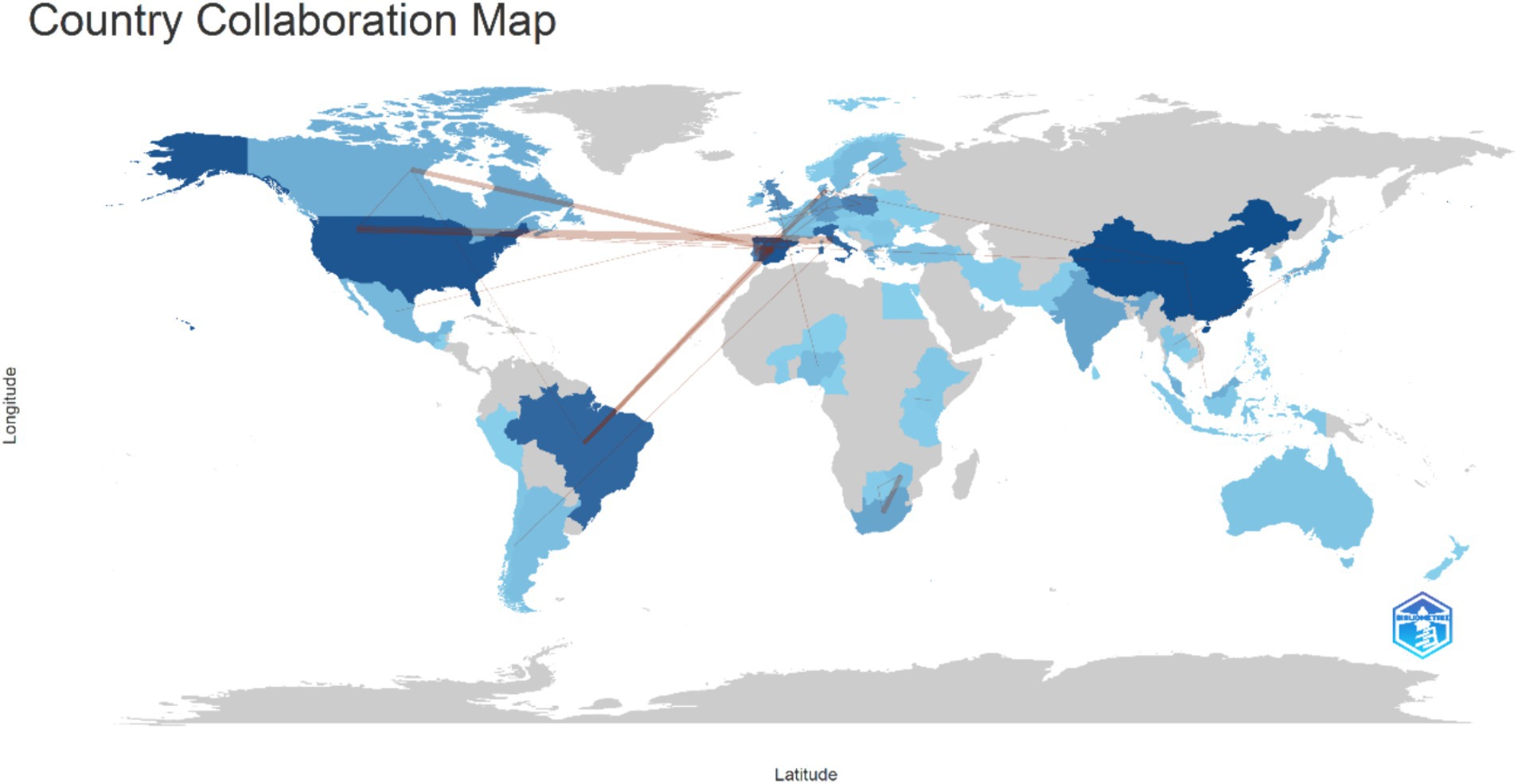
Figure 8. Country collaboration map. Source: Biblioshiny (each color is the intensity of collaboration).
It was interesting to consider that the nations with the highest number of referenced universities (South Africa and Malaysia) do not have close partnerships with other nations, leading us to believe that they do their research domestically (Table 3).
As Figure 8 demonstrates, there is collaboration among the major countries that produce articles. There is correlation between the top beer consumers of China, US and Brazil informed by Swinnen (2017) and the nations with the most publications on the issues of sustainability and recycling in the beer sector showed in Figure 7. This could be attributable to better sustainability management by beer brewing companies and major beer makers.
4.7 Keywords analysis
Figure 9 shows the evolution of most frequent keywords during the period 1972–2022. Most keywords present a higher growth during the most recent years, mainly “Fermentation”, “Yeast” or “Beer”.
It is pertinent to consider the absence of keywords related to sustainability in Figure 9; they focused on technical issues and the beer production process.
Figure 10 shows the co-occurence network. More co-selected authors’ keywords in the yeast beer literature increase the size of the box. The topic similarity and its relative strength is represented through the distance between the elements of individual pairs. Different box colors were assigned to individual clusters. A network of 2 distinct clusters is highlighted in Figure 11 representing individual subfields in yeast beer research.
It is pertinent to consider that the absence of close issues like sustainability, circular economy and recycling in Figure 10 suggests that the global beer industry does not place a high priority on environmental concerns.
4.8 Keywords, top authors and sources relations
In Figure 11, a three fields graph represents the relationships between the main authors, the sources and keywords. The diagram of rectangles with distinct colors illustrates the main elements. The value of the sum of the relations appearing between the element is represented by the rectangles and the diagram of the other elements designs the height of the rectangles. The size of the rectangles depends on the number of relations the elements have.
The analysis shows the research topics of yeast beer literature the main authors have explored, and in which sources they have most often published. The research topics considered here are the keywords used by the authors. The analysis of keywords, top authors and sources indicates that three authors (i.e., Mussatto, Iñarra and Salgado) and 9 sources (i.e., Applied Microbiology and biotechnology, Sustainability (Switzerland), Bioresource Technology, Beverages, Journal of Environmental Management, Journal of the Institute of Brewing, Journal of Cleaner Production, Anaerobic Digestion, Waste Management, Lwt) were closely linked to the main research topics of yeast beer (“brewery spent grain”, “yeast”, “circular economy”, “brewery waste”, “fermentation”, “biosorption”, “beer”, “anaerobic digestion”).
The brewing companies operating worldwide have exhibited little interest in sustainability-related issues in Figures 9, 10. However, several publications that focus on environmental issues, like sustainability and waste management, publish articles that combine environmental and beer-related topics.
It is essential to notice that the seminal work of De Briggs (2004), referenced in Table 2, is cited in several of the most current studies on sustainability in beer production, including O’Lone et al. (2024). As a result, it makes sense to carry out more research on the importance of sustainability, recycling, and the circular economy in the brewing industry.
5 Conclusion
In this study, we noticed an increase in interest, research, and public cooperation in brewery-related sectors. This trend accelerated at the beginning of the 2000s, but there has been little effort to perform a thorough examination of the thematic and methodological patterns that shape the brewery’s intellectual framework. This paper was written in response to the difficulty of systematizing and analyzing the Scopus database.
Section 3.2 covered multiple challenges in addition to defenses of our use of the bibliometric approach. In closing, there is no doubting the bibliometric method’s contribution to systematic investigations of knowledge, even though employing the impact index and other indices uncommon to it may present perverse incentives in terms of productivity. Despite these drawbacks, we observe our study’s conclusions are genuine and wish to improve the design in future investigations.
Leaving these criticisms aside, consider the findings gained, which we will discuss in this conclusion. They will build bridges between the many geographic regions where the articles and significant authors are published. This bibliometric study aimed to enhance the discussion by identifying the elements that may influence the understanding of trends and collaborations in research on recycling and the circular economy of the brewing industry.
This article reports on the evolution of the number of articles, the most relevant sources, the science output of major nations and their collaboration, the co-citation network, the evolution of author keywords, and the reach of the global brewery industry trends based on a bibliometric analysis of the scholar.
The results of this article indicate that the analysis of the literature associated with global brewing trends is a field of study with significant growth since 2000. Brewery bibliometric research advances are often seen as performing a critical function by focusing on important and contemporary issues, for example, beer, fermentation, yeast, biomass, and the industrial waste. This study describes how information promotes the growth of the brewery trends after 1972 across a range of different areas.
The bibliometric analysis of research papers on the brewery issues were gathered from the Scopus database. English is the language used in most documents (417 documents). Articles on issues related to the brewery industry have been found since the 1970s, but it was not until 2000 that the subject began to get the attention of scholars: the number of citations to articles on yeast beer increases from one per year in 1972 to 1967 in 2022, the year when publications peaked. China is the nation that has conducted most of the research on the brewery issues with a Single Country production (SCP = 36). It is significant to note the widespread collaboration and communication among academics from European countries such as Italy, Spain and Portugal, Western Europe, the United States, and American region (mainly Canada, United States and Brazil) on this subject.
“Bioresource Technology” is the journal with the highest number of publications (14 articles) on brewery bioeconomy research. Applied Microbiology and Biotechnology, Journal of Cleaner Production, Journal of the Institute of Brewing and Bioresource Technology were also significant sources.
“Brewing: Science and Practice” by De Briggs (2004), with a total of 503 citations, is the most often mentioned work. Three authors were found to have strong ties to the core areas of research on yeast beer by examination of keywords, top authors, and sources.
The findings of this study demonstrate the difficulty in increasing the sustainability of the global beer industry. This difficulty is not only for the brewing industry but also for agribusiness in general. These challenges can serve as a basis for generating a more sustainable agriculture. This could be done by applying the principles of bioeconomy and the circular economy.
Our paper considers the global beer industry, but the size of the brewing enterprises varies widely. As pointed out by Ness (2018), small and medium-sized enterprises have significant sustainability concerns and initiatives. These concentrate on several novel strategies. Craft brewers seek these to encourage sustainability on topics like energy and the environment, water efficiency and conservation, the recycling of discarded grains, and community involvement in all its forms.
As previously stated, technological and economic factors dominate the ideological agenda when discussing recycling and the circular economy in general. Furthermore, recycling and the circular economy are frequently regarded as the sole feasible answers to the trash dilemma, but this ignores the fact that recycling contributes to the continuation of an economically inefficient system.
The association between the brewery and its broader industrial ramifications, an analysis of the contribution of the various industrial brewing groups such as AB InBev in terms of research, development, and the search for sustainability applying Global Reporting Initiative (GRI) framework (Mougenot and Doussoulin, 2024), is an important point for future examination, given the primary emphasis on the sciences that form the core of research in the beer industry.
Future bibliometric research influenced by the Brundtland (1985) report should address the three Ps of sustainability, which include: Economics (“Profit”) involves promoting and maintaining a defined level of economic viability in the brewing sector. In terms of the environment (“Planet”), encourages environmental responsibility and the control of waste, pollution, and energy consumption by industry. Equity (“People”) aims to develop varied, equitable, and connected communities and social constructions that promote well-being and quality of life.
Data availability statement
The data analyzed in this study is subject to the following licenses/restrictions: the dataset is available upon request. Requests to access these datasets should be directed to Benoit Mougenot, Ym1vdWdlbm90QHVzaWwuZWR1LnBl.
Author contributions
BM: Conceptualization, Data curation, Formal analysis, Investigation, Methodology, Project administration, Resources, Software, Supervision, Validation, Visualization, Writing – original draft, Writing – review & editing. JD: Conceptualization, Formal analysis, Investigation, Methodology, Project administration, Resources, Supervision, Validation, Visualization, Writing – original draft, Writing – review & editing. MR: Conceptualization, Formal analysis, Investigation, Methodology, Project administration, Resources, Supervision, Validation, Visualization, Writing – original draft, Writing – review & editing.
Funding
The author(s) declare that no financial support was received for the research, authorship, and/or publication of this article.
Conflict of interest
The authors declare that the research was conducted in the absence of any commercial or financial relationships that could be construed as a potential conflict of interest.
Publisher’s note
All claims expressed in this article are solely those of the authors and do not necessarily represent those of their affiliated organizations, or those of the publisher, the editors and the reviewers. Any product that may be evaluated in this article, or claim that may be made by its manufacturer, is not guaranteed or endorsed by the publisher.
Footnotes
References
Aboudi, K., Fernández-Güelfo, L. A., Álvarez-Gallego, C. J., and Romero-García, L. I. (2021). “Biogas, biohydrogen, and polyhydroxyalkanoates production from organic waste in the circular economy context” in Sustainable biofuels. ed. Ramesh C. Ray (Amsterdam: Elsevier), 305–343.
Abt, H. (1992). Publication practices in various sciences. Scientometrics 24, 441–447. doi: 10.1007/BF02051040
Aria, M., and Cuccurullo, C. (2017). Bibliometrix: an R-tool for comprehensive science mapping analysis. J. Informet. 11, 959–975. doi: 10.1016/j.joi.2017.08.007
Beltran, J. R., Aguinis, H., Shuumarjav, Y., and Mercado, M. (2024). Putting scholarly impact in context: implications for policymaking and practice. Acad. Manag. Perspect. 2023:0198. doi: 10.5465/amp.2023.0198
Bergstrom, C. T., West, J. D., and Wiseman, M. A. (2008). The eigenfactor™ metrics. J. Neurosci. 28:Article 45. doi: 10.1523/JNEUROSCI.0003-08.2008
Brundtland, G. H. (1985). World commission on environment and development. Environ. Policy Law 14, 26–30. doi: 10.1016/S0378-777X(85)80040-8
Cerqueira e Silva, K. F., Rabelo, R. S., Feltre, G., Hubinger, M., and Hubinger, M. (2022). Bitter substances recovery from hot trub: a study of polymeric membranes performance in a sequential mode with fouling investigation. Purif. Technol. 303:122241. doi: 10.1016/j.seppur.2022.122241
Chia, S. Y., Tanga, C. M., Osuga, I. M., Mohamed, S. A., Khamis, F. M., Salifu, D., et al. (2018). Effects of waste stream combinations from brewing industry on performance of black soldier Fly, Hermetia illucens (Diptera: Stratiomyidae). PeerJ 6:e5885. doi: 10.7717/peerj.5885
Conway, J. (2022). Statista. Beer production worldwide from 1998 to 2022. Available at: https://es.statista.com/estadisticas/600571/produccion-de-cerveza-a-nivel-mundial-1998/.
Corvellec, H., Stowell, A. F., and Johansson, N. (2022). Critiques of the circular economy. J. Ind. Ecol. 26, 421–432. doi: 10.1111/jiec.13187
Costanza, R., Howarth, R. B., Kubiszewski, I., Liu, S., Ma, C., Plumecocq, G., et al. (2016). Influential publications in ecological economics revisited. Ecol. Econ. 123, 68–76. doi: 10.1016/j.ecolecon.2016.01.007
de Oliveira Silva, M., Almeida, F. L. C., da Paixão, R. N., de Souza, W. F. C., de Luna Freire, K. R., and de Oliveira, C. P. (2022). Preparation and characterization of churro dough with malt bagasse flour. Int. J. Gastron. Food Sci. 27:100427. doi: 10.1016/j.ijgfs.2021.100427
Doussoulin, J. P. (2020). A paradigm of the circular economy: the end of cheap nature? Energy Ecol. Environ. 5, 359–368. doi: 10.1007/s40974-019-00145-2
Doussoulin, J. P., and Mougenot, B. (2021). “The economic, climate change and public health edges of the geopolitics of COVID-19: an exploratory bibliometric analysis” in Biotechnology to combat COVID-19. eds. Agrawal M, and Biswas S. (London: IntechOpen).
Durán-Sánchez, A., de la Cruz del Río-Rama, M., Álvarez-García, J., and Oliveira, C. (2022). Analysis of worldwide research on craft beer. SAGE Open 12:215824402211081. doi: 10.1177/21582440221108154
European Commission. (2017). The Role of waste-to-energy in the circular economy. Proceedings of the UNECE Ministerial Conference, 11.
Gagolewski, M. (2011). Bibliometric impact assessment with R and the CITAN package. J. Informet. 5, 678–692. doi: 10.1016/j.joi.2011.06.006
Gandariasbeitia, M., López-Pérez, J. A., Juaristi, B., Abaunza, L., and Larregla, S. (2021). Biodisinfestation with agricultural by-products developed long-term suppressive soils against Meloidogyne incognita in lettuce crop. Front. Sustain. Food Syst. 5:663248. doi: 10.3389/fsufs.2021.663248
Haas, W., Krausmann, F., Wiedenhofer, D., and Heinz, M. (2015). How circular is the global economy? An assessment of material flows, waste production, and recycling in the European Union and the world in 2005. J. Ind. Ecol. 19, 765–777. doi: 10.1111/jiec.12244
Harter, S. P. (1998). Scholarly communication and electronic journals: an impact study. J. Am. Soc. Inf. Sci. 49, 507–516. doi: 10.1002/(SICI)1097-4571(19980501)49:6<507::AID-ASI3>3.0.CO;2-X
Haustein, S., and Larivière, V. (2014). “The use of bibliometrics for assessing research: possibilities, limitations and adverse effects” in Incentives and performance: Governance of research organizations (Cham: Springer), 121–139.
Ho, D. M., Thach, B. T., and Bui, H. M. (2024). Establishing criteria for advancing circular economy practices in the beer industry: a case study in South Vietnam. Environ. Qual. Manag. 34. doi: 10.1002/tqem.22218
Hoalst-Pullen, N., Patterson, M. W., Mattord, R. A., and Vest, M. D. (2014). “Sustainability trends in the regional craft beer industry” in The geography of beer: Regions, environment, and societies (Dordrecht: Springer), 109–116.
Jones, E. (2018). “Brewing green: sustainability in the craft beer movement” in Craft beverages and tourism, volume 2: environmental, societal, and marketing implications. eds. S. Slocum, C. Kline, and C. Cavaliere (Cham: Palgrave Macmillan), 9–26.
Kabil, M., Priatmoko, S., Magda, R., and Dávid, L. D. (2021). Blue economy and coastal tourism: a comprehensive visualization bibliometric analysis. Sustain. For. 13:3650. doi: 10.3390/su13073650
Karlsen, F., and Skov, P. V. (2022). Review – potentials and limitations of utilising brewer's spent grain as a protein source in aquaculture feeds. J. Clean. Prod. 357:131986. doi: 10.1016/j.jclepro.2022.131986
Kostoff, R. (2002). Citation analysis of research performer quality. Scientometrics 53, 49–71. doi: 10.1023/A:1014831920172
Koul, B., Yakoob, M., and Shah, M. P. (2022). Agricultural waste management strategies for environmental sustainability. Environ. Res. 206:112285. doi: 10.1016/j.envres.2021.112285
Kozłowski, R., Dziedziński, M., Stachowiak, B., and Kobus-Cisowska, J. (2021). Non-and low-alcoholic beer – popularity and manufacturing techniques. Acta Sci. Pol. Technol. Aliment. 20, 347–357. doi: 10.17306/J.AFS.0961
Lins, L. P., Martinez, D. G., Furtado, A. C., and Padilha, J. C. (2023). Biomethane generation and CO2 recovery through biogas production using brewers’ spent grains. Biocatal. Agric. Biotechnol. 48:102579. doi: 10.1016/j.bcab.2022.102579
Liu, J., Mooney, H., Hull, V., Davis, S. J., Gaskell, J., Hertel, T., et al. (2015). Systems integration for global sustainability. Science 347:1258832. doi: 10.1126/science.1258832
Mahari, W. A. W., Peng, W., Nam, W. L., Yang, H., Lee, X. Y., Lee, Y. K., et al. (2020). A review on valorization of oyster mushroom and waste generated in the mushroom cultivation industry. J. Hazard. Mater. 400:123156. doi: 10.1016/j.jhazmat.2020.123156
Masran, R., Zanirun, Z., Bahrin, E. K., Ibrahim, M. F., Lai Yee, P., and Abd-Aziz, S. (2016). Harnessing the potential of ligninolytic enzymes for lignocellulosic biomass pretreatment. Appl. Microbiol. Biotechnol. 100, 5231–5246. doi: 10.1007/s00253-016-7545-1
Michelin, M., Ruíz, H. A., Silva, D. P.da, Ruzene, D. S., Teixeira, J. A., and Polizeli, M. L. T. M. (2015). Cellulose from lignocellulosic waste. In: K. Ramawat and J. M. Mérillon (eds) Polysaccharides. Springer, Cham
Miller, E. T. (2024). Assessing sustainability within the brewing industry: a literature review and benchmarking analysis. Electronic Theses and Dissertations. Paper 4296. doi: 10.18297/etd/4296
Moran-Aguilar, M. G., Costa-Trigo, I., Calderón-Santoyo, M., Domínguez, J. M., and Aguilar-Uscanga, M. G. (2021). Production of cellulases and xylanases in solid-state fermentation by different strains of aspergillus Niger using sugarcane bagasse and brewery spent grain. Biochem. Eng. J. 172:108060. doi: 10.1016/j.bej.2021.108060
Mougenot, B., and Doussoulin, J.-P. (2022). Conceptual evolution of the bioeconomy: a bibliometric analysis. Environ. Dev. Sustain. 24, 1031–1047. doi: 10.1007/s10668-021-01481-2
Mougenot, B., and Doussoulin, J.-P. (2024). A bibliometric analysis of the global reporting initiative (GRI): Global trends in developed and developing countries. Environ. Dev. Sustain. 26, 6543–6560. doi: 10.1007/s10668-023-02974-y
Mussatto, S. I. (2014). Brewer’s spent grain: a valuable feedstock for industrial applications. J Sci Food Agric. 94, 1264–1275.
Ness, B. (2018). Beyond the pale (ale): an exploration of the sustainability priorities and innovative measures in the craft beer sector. Sustain. For. 10. doi: 10.3390/su10114108
Nobre, G. C., and Tavares, E. (2017). Scientific literature analysis on big data and internet of things applications on circular economy: a bibliometric study. Scientometrics 111, 463–492. doi: 10.1007/s11192-017-2281-6
O’Lone, C. E., Juhász, A., Nye-Wood, M., Moody, D., Dunn, H., Ral, J.-P., et al. (2024). Advancing sustainable malting practices: Aquaporins as potential breeding targets for improved water uptake during controlled germination of barley (hordeum vulgare l.). J. Agric. Food Chem. 72, 10149–10161. doi: 10.1021/acs.jafc.4c00884
Olajire, A. A. (2020). The brewing industry and environmental challenges. J. Clean. Prod. 256:102817. doi: 10.1016/j.jclepro.2012.03.003
Ortiz, I., Torreiro, Y., Molina, G., Maroño, M., and Sánchez, J. M. (2019). A feasible application of circular economy: spent grain energy recovery in the beer industry. Waste Biomass Valorization 10, 3809–3819. doi: 10.1007/s12649-019-00677-y
Oyedeji, A. B., and Wu, J. (2023). Food-based uses of brewers spent grains: current applications and future possibilities. Food Biosci. 54:102774. doi: 10.1016/j.fbio.2023.102774
Pasquet, P.-L., Villain-Gambier, M., and Trébouet, D. (2024). By-product valorization as a means for the brewing industry to move toward a circular bioeconomy. Sustain. For. 16:3472. doi: 10.3390/su16083472
Raimilla, M., Fernández-Ortúzar, J. E., González-Esparza, A., and Ravanal, M. C. (2023). Bagasse produced in the brewing industry: recovery and reuse alternatives. Agro Sur. 51, 33–42. doi: 10.4206/agrosur.2023.v51n1-03
Robbins, T. L., and Boillat, B. (2002). Control of odors in the brewing and food processing industries. Tech. Q. Master Brew. Assoc. Am. 39, 29–31.
Seow, Y. X., Tan, Y. H., Mubarak, N. M., Kansedo, J., Khalid, M., Ibrahim, M. L., et al. (2022). A review on biochar production from different biomass wastes by recent carbonization technologies and its sustainable applications. J. Environ. Chem. Eng. 10:107017. doi: 10.1016/j.jece.2021.107017
Sganzerla, W. G., Ampese, L. C., Mussatto, S. I., and Forster-Carneiro, T. (2021). A bibliometric analysis on potential uses of brewer’s spent grains in a biorefinery for the circular economy transition of the beer industry. Biofuels Bioprod. Biorefin. 15, 1965–1988. doi: 10.1002/bbb.2290
Sganzerla, W. G., Costa, J. M., Tena-Villares, M., Buller, L. S., Mussatto, S. I., and Forster-Carneiro, T. (2022). Dry anaerobic digestion of Brewer’s spent grains toward a more sustainable brewery: operational performance, kinetic analysis, and bioenergy potential. Fermentation 9:2. doi: 10.3390/fermentation9010002
Shirkavand, E., Baroutian, S., Gapes, D. J., and Young, B. R. (2016). Combination of fungal and physicochemical processes for lignocellulosic biomass pretreatment–a review. Renew. Sust. Energ. Rev. 54, 217–234. doi: 10.1016/j.rser.2015.10.003
Suryadi, H., Judono, J. J., Putri, M. R., Eclessia, A. D., Ulhaq, J. M., Agustina, D. N., et al. (2022). Biodelignification of lignocellulose using ligninolytic enzymes from white-rot fungi. Heliyon 8:e08865. doi: 10.1016/j.heliyon.2022.e08865
Swinnen, J. (2017). Beer consumption and trade in an era of economic growth and globalization. Choices 32, 1–6.
Vinkler, P. (1991). Possible causes of differences in information impact of journals from different subfields. Scientometrics 20, 145–161. doi: 10.1007/BF02018152
Withers, E. T. (2017). “The impact and implications of craft beer research: an interdisciplinary literature review” in Craft beverages and tourism, volume 1. eds. C. Kline, S. Slocum, and C. Cavaliere (Cham: Palgrave Macmillan), 11–24.
Yin Tan, W., Li, M., Devkota, L., Attenborough, E., and Dhital, S. (2023). Mashing performance as a function of malt particle size in beer production. Crit. Rev. Food Sci. Nutr. 21, 5372–5387. doi: 10.1080/10408398.2021.2018673
Zduńska, K., Dana, A., Kolodziejczak, A., and Rotsztejn, H. (2018). Antioxidant properties of ferulic acid and its possible application. Skin Pharmacol. Physiol. 31, 332–336. doi: 10.1159/000491755
Keywords: brewery, yeast, waste, circular economy, recycling, bibliometric analysis
Citation: Ravanal MC, Doussoulin JP and Mougenot B (2024) Does sustainability matter in the global beer industry? Bibliometrics trends in recycling and the circular economy. Front. Sustain. Food Syst. 8:1437910. doi: 10.3389/fsufs.2024.1437910
Edited by:
Raj Morya, Yonsei University, Republic of KoreaReviewed by:
Peter R. Corridon, Khalifa University, United Arab EmiratesRamiya Baskaran, Corteva Agriscience, United States
Oscar Martínez-Avila, University of Vic – Central University of Catalonia, Spain
Copyright © 2024 Mougenot, Doussoulin and Ravanal. This is an open-access article distributed under the terms of the Creative Commons Attribution License (CC BY). The use, distribution or reproduction in other forums is permitted, provided the original author(s) and the copyright owner(s) are credited and that the original publication in this journal is cited, in accordance with accepted academic practice. No use, distribution or reproduction is permitted which does not comply with these terms.
*Correspondence: Benoit Mougenot, Ym1vdWdlbm90QHVzaWwuZWR1LnBl
 María Cristina Ravanal1
María Cristina Ravanal1 Jean Pierre Doussoulin
Jean Pierre Doussoulin Benoit Mougenot
Benoit Mougenot